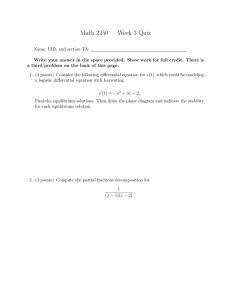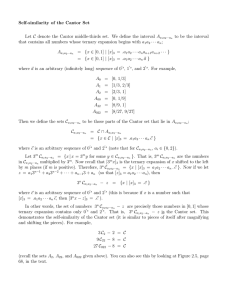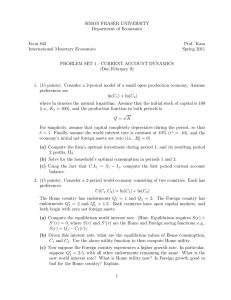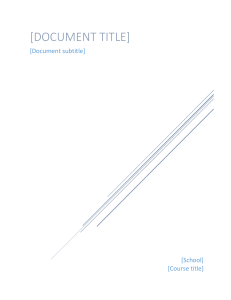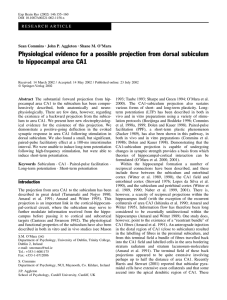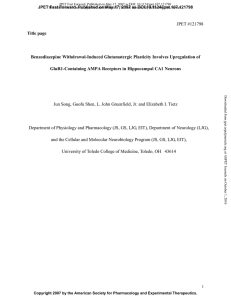SIMON FRASER UNIVERSITY Department of Economics Econ 446 Prof. Kasa
advertisement
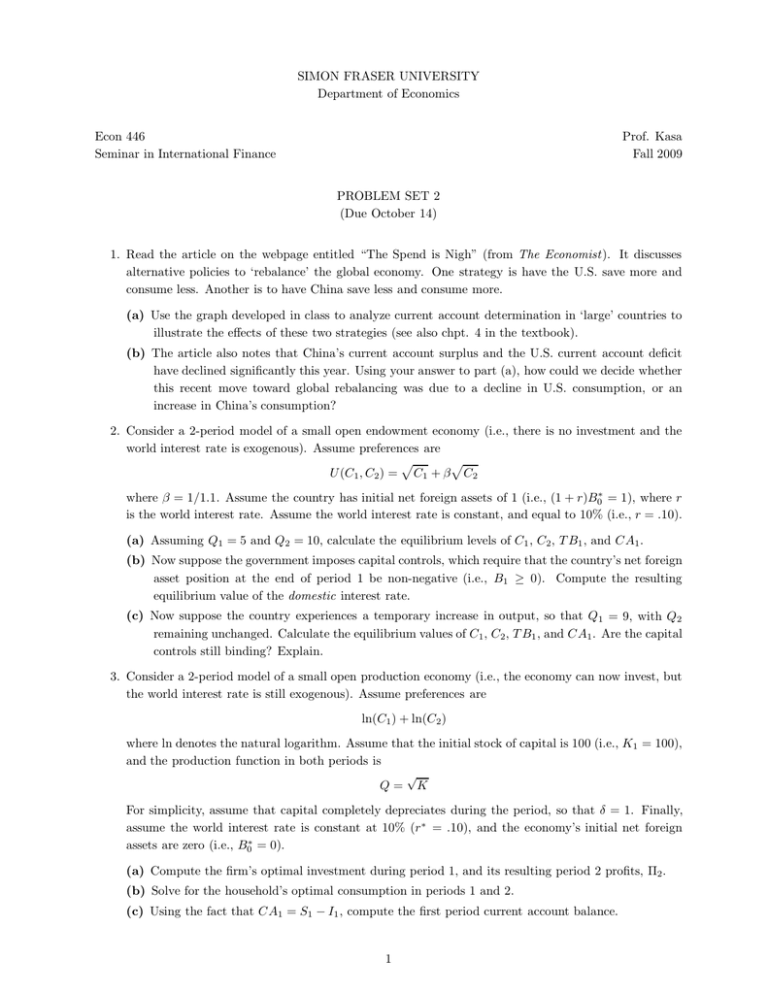
SIMON FRASER UNIVERSITY Department of Economics Econ 446 Seminar in International Finance Prof. Kasa Fall 2009 PROBLEM SET 2 (Due October 14) 1. Read the article on the webpage entitled “The Spend is Nigh” (from The Economist). It discusses alternative policies to ‘rebalance’ the global economy. One strategy is have the U.S. save more and consume less. Another is to have China save less and consume more. (a) Use the graph developed in class to analyze current account determination in ‘large’ countries to illustrate the effects of these two strategies (see also chpt. 4 in the textbook). (b) The article also notes that China’s current account surplus and the U.S. current account deficit have declined significantly this year. Using your answer to part (a), how could we decide whether this recent move toward global rebalancing was due to a decline in U.S. consumption, or an increase in China’s consumption? 2. Consider a 2-period model of a small open endowment economy (i.e., there is no investment and the world interest rate is exogenous). Assume preferences are p p U (C1, C2) = C1 + β C2 where β = 1/1.1. Assume the country has initial net foreign assets of 1 (i.e., (1 + r)B0∗ = 1), where r is the world interest rate. Assume the world interest rate is constant, and equal to 10% (i.e., r = .10). (a) Assuming Q1 = 5 and Q2 = 10, calculate the equilibrium levels of C1 , C2, T B1 , and CA1. (b) Now suppose the government imposes capital controls, which require that the country’s net foreign asset position at the end of period 1 be non-negative (i.e., B1 ≥ 0). Compute the resulting equilibrium value of the domestic interest rate. (c) Now suppose the country experiences a temporary increase in output, so that Q1 = 9, with Q2 remaining unchanged. Calculate the equilibrium values of C1, C2, T B1 , and CA1. Are the capital controls still binding? Explain. 3. Consider a 2-period model of a small open production economy (i.e., the economy can now invest, but the world interest rate is still exogenous). Assume preferences are ln(C1) + ln(C2) where ln denotes the natural logarithm. Assume that the initial stock of capital is 100 (i.e., K1 = 100), and the production function in both periods is √ Q= K For simplicity, assume that capital completely depreciates during the period, so that δ = 1. Finally, assume the world interest rate is constant at 10% (r∗ = .10), and the economy’s initial net foreign assets are zero (i.e., B0∗ = 0). (a) Compute the firm’s optimal investment during period 1, and its resulting period 2 profits, Π2. (b) Solve for the household’s optimal consumption in periods 1 and 2. (c) Using the fact that CA1 = S1 − I1 , compute the first period current account balance. 1

